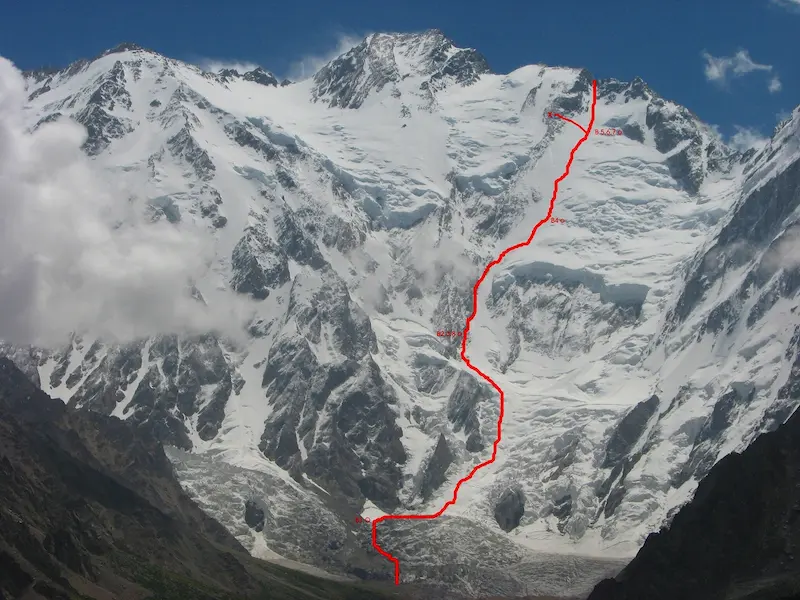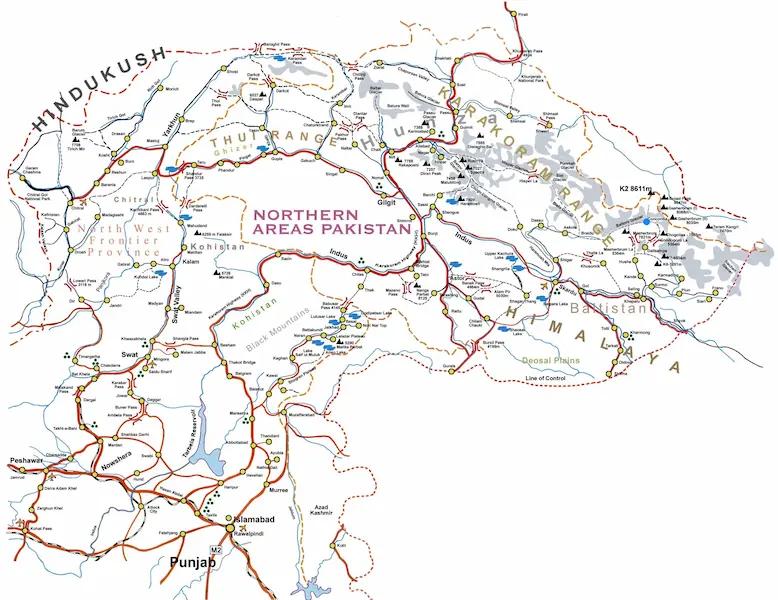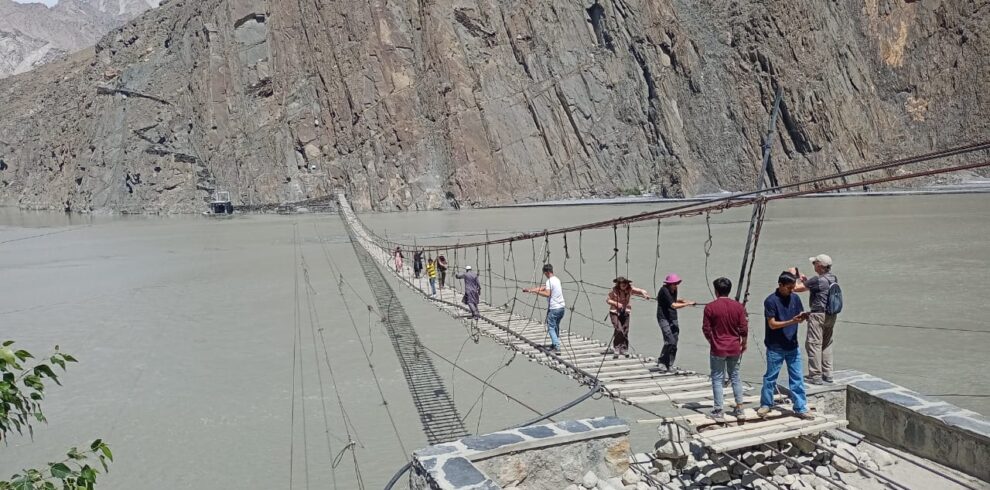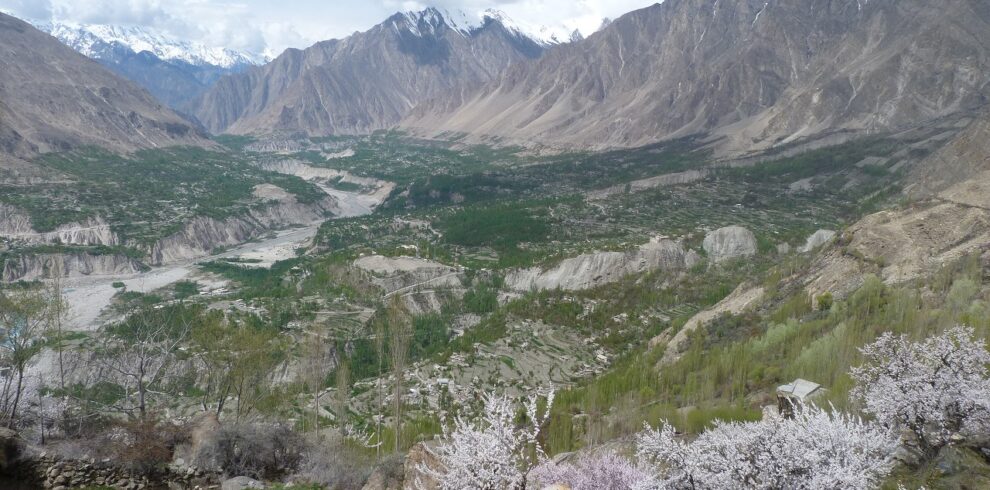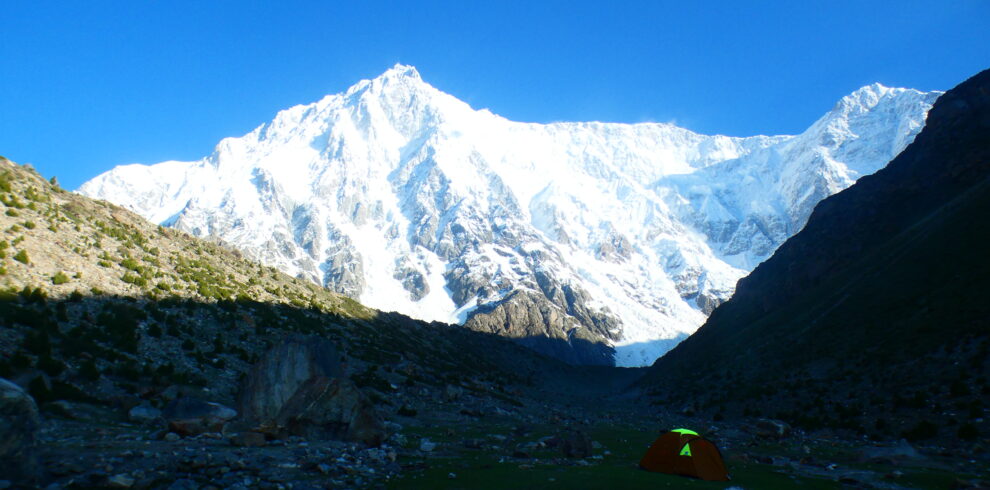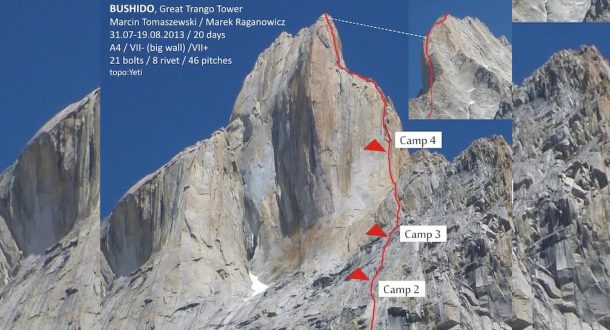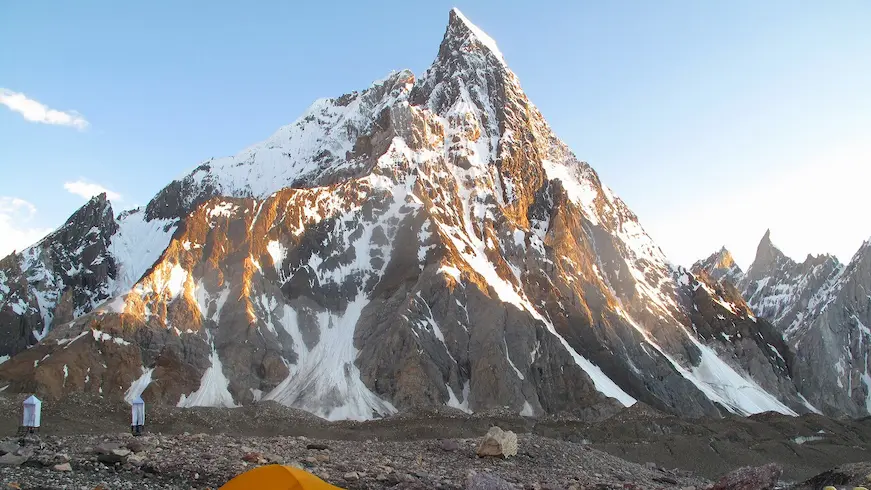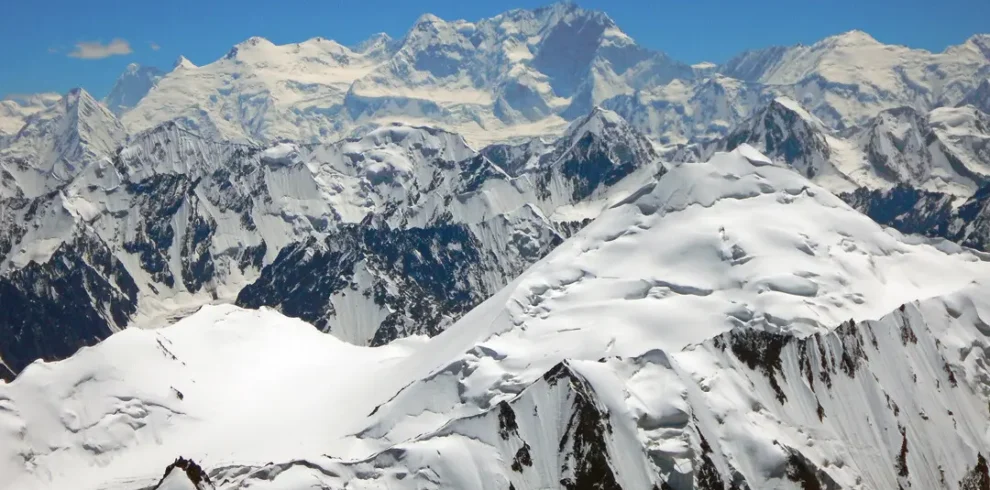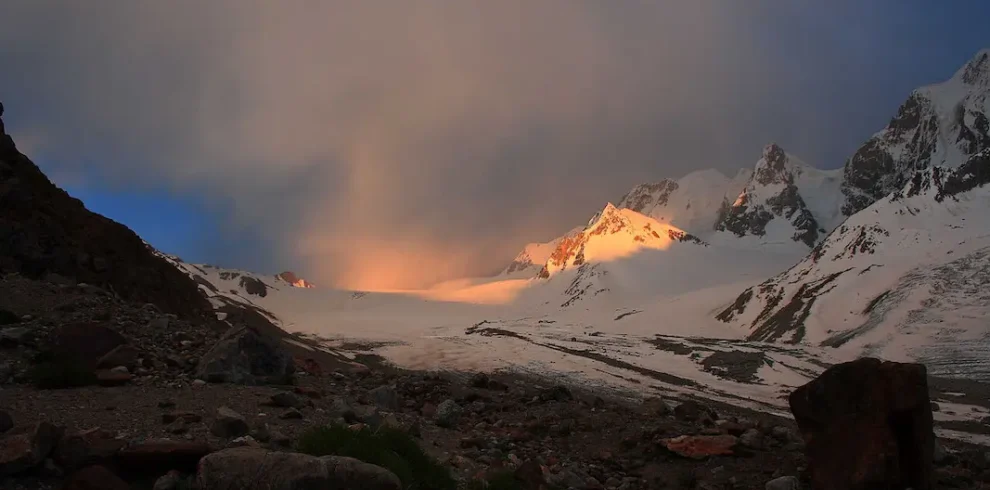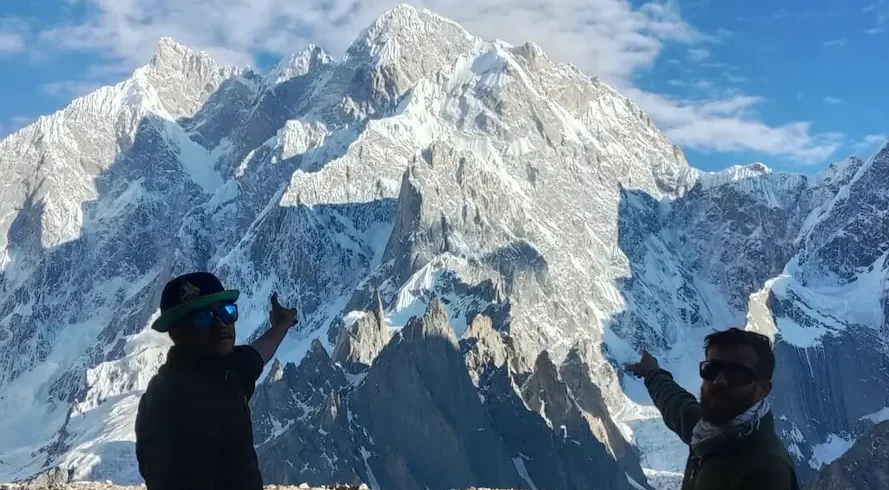-
2-3 stars hotels (in some places best available)
-
Islamabad
-
Islamabad
-
Guided
-
English
-
Breakfast, lunch and dinner (normally included)
-
Yes
-
Car or Van/ grand Cabin 13 seats or Coaster/minibus, 21seats (4x 4 classical jeeps)
-
18
-
75
NANGA PARBAT 8125M CLIMBING EXPEDITION PAKISTAN
Nanga Parbat means “Naked Mountain” and its alternative name is “Diamir Peak” which means “The King of the Mountains” is the 2nd highest peak in Pakistan after the mount K-2 and 9th position in the world, located at the furthermost Western end of the Himalayas, where the range of Himalayan mountain ends and Karakorum starts and it is the Western end pillar of the Himalayas. The central Himalayas are located in Nepal, while the Eastern. Mountains extend to the border of Bhutan and Sikkim and the Western end is in the Northern Areas of Pakistan. The massif of the Nanga Parbat forms the border between the districts of Astore to the East, and Chilas-Diamir to the West Indus River flows to the North at about an altitude of 1200M, creating an impressive difference in height and marvelous sceneries. The Peak can be viewed from the Karakorum Highway that rises near the famous curve of the Indus River close to its confluence with the Gilgit River and the homonyms town. The Nanga Parbat is lying on the main air route from Islamabad to Gilgit and Skardu and can
be seen in its full majesty and fury from the air. The Nanga Parbat was discovered in the nineteenth century by Europeans, Schlagintweit brothers from Germany in 1854, and drew a panoramic view of this mountain that is the first known picture of Nanga Parbat Peak. After that, the world came to know about Nanga Parbat in the Himalayas and the curse of it began. It has been climbed first time by German- Austrian Mountaineer Mr. Berman Buhl in 1953 and became the focus of the mountaineers in the world. Before 1953 some expeditions tried to summit but they could not succeed to scale and many of them lost their lives on the way to the summit. The Nanga Parbat is one of the most challenging mountains in the world to climb and has the largest history of disaster and failures than other mountain in the world and has claimed more lives than any of the mountains in the Karakorum and the Himalayas thus becoming the most murderous peak in the world and always been associated with tragedies and tribulations until it was climbed in 1953. Therefore, it has the reputation of the “KILLER MOUNTAIN” and is also re-known by this name.
CLIMBING ROUTES ON NANGA PARBAT:
The Nanga Parbat main peak has a height of 8125M/26660 feet and has three vast faces forming three, glaciers and rivers respectively. They are named after the villages that lie beneath. RAKHIOT FACE that is the North Face of Nanga Parbat, dominated by the
North and South Silver Crag and Silver Plateau. This route is the heaviest in distance from the main summit and demands enormous preparation, as well as vigor to climb. Many German climbers tried their lunch by this route and most of them ended with many casualties and tragedies of their members therefore it was named “The German Fateful Mountain. This mountain was
successfully climbed first time by this route in 1953 by the distinguished mountaineer Mr. Hermann Buhl from Austria, who was a member of the German-Austrian Expedition led by Dr. Kar Herlighoffer. DIAMIR FACE, which is West or Northwest Face is rocky in the beginning. It converts itself into ice fields around Nanga Parbat Peak. It was first climbed by this route by another German Expedition in 1962 by the
The same leader, when Tony Kinshofer, A. Mannhardt, and S Low reached the summit and got into an accident, died while descending. This route was later called the German or Classical route also known as the normal route or Kingshofer. Route. The RUPAL FACE is South Face, which is the highest wall 4500M in the world with an average slope of 57 degrees, a marvelous creation of nature. It was climbed first time on this route in 1970 by two German-speaking brothers from Italian Tyrol, Mr. Reinhold, and Gunther Messner, and the expedition was led again by Dr. Herlighofer. Many life casualties during the climbing on Nanga Parbat are due to the enormous height, with all consequences to human organisms at altitudes above 7000M, called death zones, gather with extreme weather conditions. The latter, in part a result of the specific geographical position of the mountain, monsoon periods, and tropical climate in the surrounding valleys, leading to drastic temperature changes during the day and night also in altitude (-30 to +30 degrees Celsius), quick dynamic change in conditions; sudden storms; hurricane winds; excessive ice-falls and
avalanches, combined with rapid glacier movements and change in crevasse relief. All this has led to acquiring Nanga Parbat a bad reputation, assigning it the name “KILLER MOUNTAIN”.
Higlights
- 1895 Albert F. Mummery from Britain died during his attempt to climb Nanga Parbat from the Diamir (West) face. 1934 Several mountaineers die during German expedition in a snowstorm 1937 An avalanche killed 16 mountaineers (including 9 Sherpas) of a German expedition.
- 1953 Herman Buhl reaches the summit. The expedition was the first led by Herrligkoffer. 1962 the Bavarians Toni Kinshofer, Siegfried Löw and Anderl Mannhardt climb for the first time the Diamir-slope. 1970 the south-tyrolian brothers Reinhold and Günther Messner climbed the highest face in the world (Rupal face) and traverse to the Diamir face. During this first traverse of an 8000m peak Günther Messner lost. 1990 A ski-expedition (Germans, Polish, Jugoslavians) led by Herrligkoffer fails to reach the summit via the Diamir Glacier and the Diamir West Face. 1991 again an expedition led by Peter Wörgötter tries to reach the summit via the 1990 route. Herbert Rainer could reach 7400m. 2000 Hans Peter Eisendle, Wolfgang Thomaseth and Reinhold Messner reach 7500m on the Diamir West face, where it joins the Czech route from 1971.
- 2005 the Americans Steve House and Vince Anderson open a new route on the Rupal slope. “North Pakistan Adventure” may propose you all the services to the Base Camp including everything on an all-inclusive basis and can assist you at each step of your expedition to make it success Naga Parbat from Fairy Meadow Naga Parbat from Fairy Meadow Story! . We may also provide partial services such as transportation, service of guide and cook, hotel reservations, arrangement of porters (low and high altitude), providing kitchen equipment etc.,
- Our full package covers the following services, Transportation from Islamabad airport to back Islamabad airport (bus, coaster, hiace van and 4-Wheel Jeeps where would be needed /domestic airfares according to requirement.
- Hotel accommodation with meals (breakfast, lunch and dinner) Camping food during the trek and at the base camp as well as you will be in the base camp Wages of the porters for the base camp and their insurances, including their food and kit Follow up and in contact with Ministry of Tourism to expedite the processing of the climbing permit.
- or Alpine Club in Islamabad Sleeping tents, Mess and kitchen tents, sleeping mattresses, toilet tent, bath tent, tables and chairs, plastic sheets for the base camp The arrangement of high altitude porters and any other crew pertaining to the requirement Kitchen appliance, crockery, stove, fuel etc. for the base camp Service of cook, assistant and their insurances and kits Services of guide, assistant for the base camp and their insurances and kits Porters for personal baggage (personal climbing equipment and high altitude food etc)



